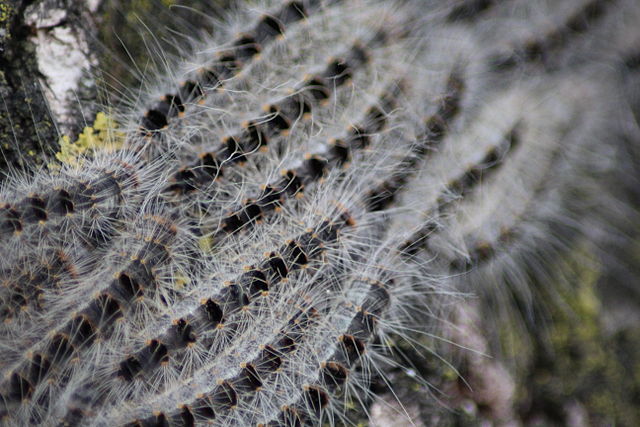Toxic caterpillars are invading parts of London, British forestry authorities warn. These critters have long white hairs that can trigger allergic reactions, including skin or eye irritation, breathing difficulties, and at worse, anaphylactic shock.
The Forestry Commission, which monitors forests in England and Scotland, said that caterpillars of the oak processionary moth were seen emerging from eggs this April, the New York Times reports. The caterpillars’ hairs are released as a defense mechanism or can be carried by winds. They contain an irritant called thaumetopoein.
Jason J. Dombroskie, manager of the Cornell University Insect Collection and coordinator of the Insect Diagnostic Lab in Ithaca, said,
At best, you can get contact dermatitis. At worst, you can die. You can go into anaphylactic shock and have your airways close up. The airborne hairs set up a whole different ballgame.
Similar warnings have been issued in the past, as officials have tried to stop the insects from spreading. This year, official began treating infected trees in a “control zone” using biopesticides – these use viruses or bacteria that only harm the target. Over 600 sites are expected to be treated until late May or early June, the Forestry Commission said.
A spokeswoman for Britain’s Department for Environment, Food and Rural Affairs said, “We advise people not to pick up the caterpillar or pick up the nest.” There have been no reports of severe reactions due to caterpillar contact, so far.
Robert Glatter, an emergency doctor at Lenox Hill Hospital in Manhattan, said that the speed of allergic reaction after contact is generally slower compared to a bee sting. Each caterpillar has more than 62,000 hairs, and the toxin can stay active for up to five years. “This is where the true toxicity of the caterpillar arises. Word to the wise — it’s best to observe their beauty from a distance.”
The caterpillars also feed on oak tree leaves and can strip the trees, making them vulnerable to other pests, floods, and droughts.
























